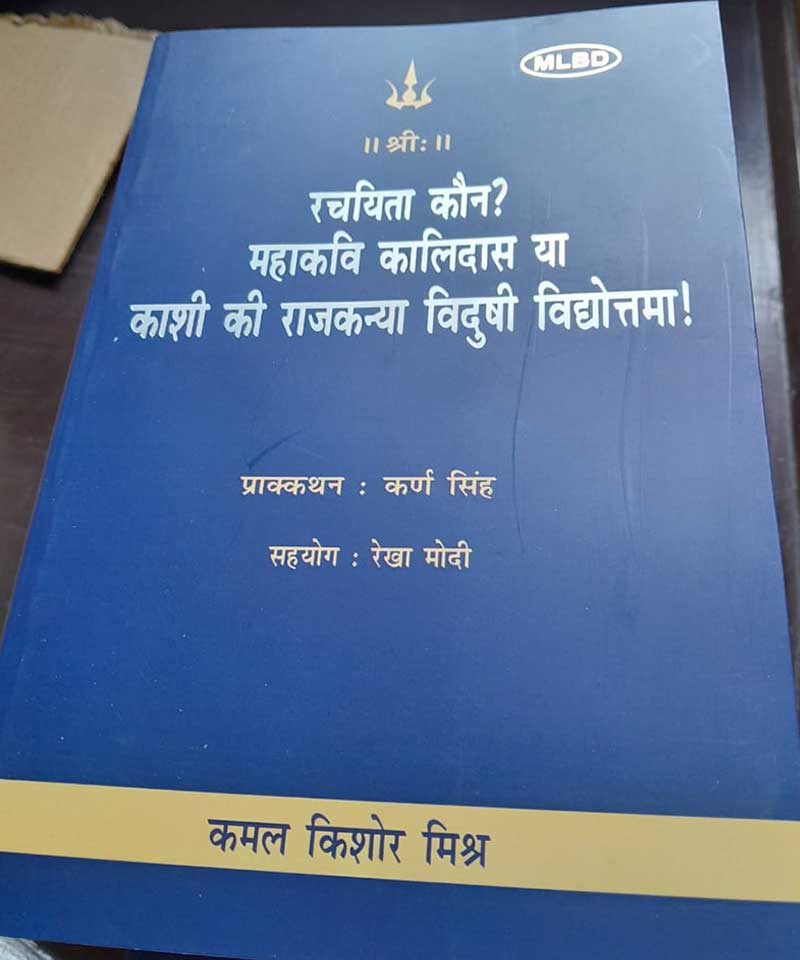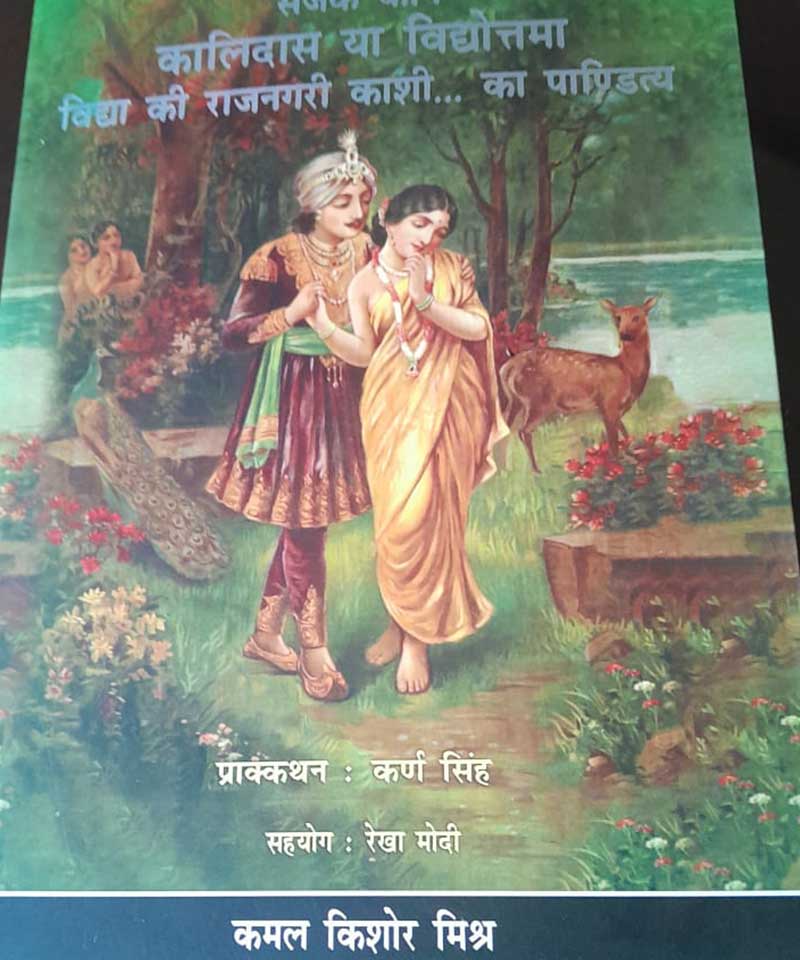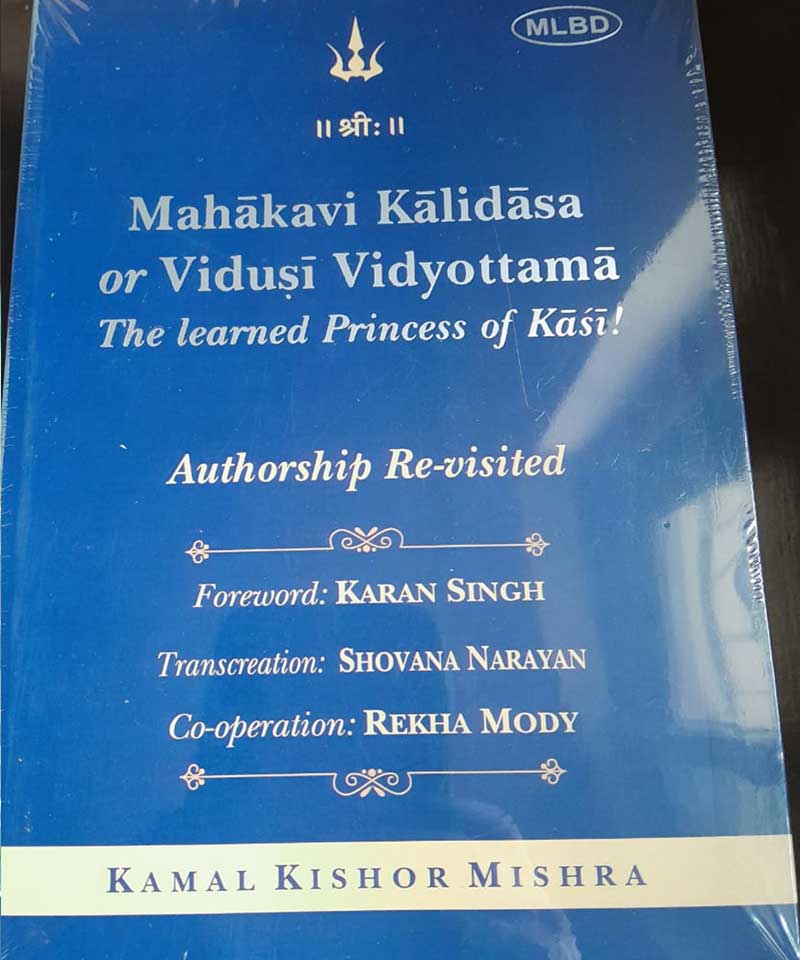
Who is the author? Kalidas or Viddyottama? A Research Study
Dr. Kamal Kishore Mishra
Asst Professor Dept Of Sanskrit, University of Kolkata
Authorship Revisited: Mahākavi Kālidāsa or Viduṣi Vidyottamā, the Learned Princess of Kāśī?
With utmost humility and reverence, we take this opportunity to present before the esteemed audience of the 19th World Sanskrit Conference in Kathmandu a set of three thought-provoking and research-oriented publications that seek to revisit a profound question concerning Sanskrit literary history:

रचयिता कौन? महाकवि कालिदास या काशी की राजकन्या विदुषी विद्योत्तमा!

सर्जक कौन? कालिदास या विद्योत्तमा — विद्या की राजनगरी काशी का पाण्डित्य

Mahākavi Kālidāsa or Viduṣi Vidyottamā, the Learned Princess of Kāśī? — Authorship Revisited
Foreword: Dr. Karan Singh
Transcription:Shovana Narayan
Support : Rekha Mody
Research and Conceptualization: Dr. Kamal Kishor Mishra
Head, Department of Sanskrit, University of Calcutta
This humble academic offering arises from a sincere attempt to explore an alternative lens on the authorship traditionally attributed to Mahākavi Kālidāsa. With great respect for our classical traditions, the researcher gently raises the possibility that a woman’s voice — subtle yet pervasive — might be discerned throughout the celebrated works.
The emotional depth, psychological insight, and dignified portrayal of women across Kālidāsa’s oeuvre may point toward a distinctly feminine authorship, possibly that of Viduṣi Vidyottamā, the renowned scholar-princess of Kāśī. While we remain deeply reverent of the canonical legacy, this inquiry aspires only to offer a supplementary perspective for thoughtful reflection.
Characters such as Śakuntalā, Ūrvaśī, Mālavikā, Dhāriṇī, Aushīnari, Indumatī, Pārvatī, Sītā, Kauśikī, Rati, and the Yakṣiṇī are presented not merely as figures of poetic imagination but as women of intellect, emotion, and agency. Their inner strength, silent endurance, and graceful resistance speak volumes — often through nuanced expression rather than overt declaration.
The themes of love and longing, separation and reunion, motherhood and widowhood, dignity and resilience, and the quest for poetic justice—so deeply embedded in these works—may indeed resonate with the lived experiences and sensitivities of a refined female intellect.
We feel honoured and grateful to partake in this gentle academic re-exploration. May this endeavour, undertaken with devotion and scholarly sincerity, serve as a respectful tribute to both Mahākavi Kālidāsa and the possible veiled brilliance of Viduṣi Vidyottamā, whose contribution, if indeed present, remains a silent but shining light in the history of Indian literature.